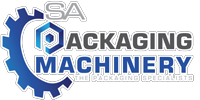Choosing the right packaging machinery is a significant investment—and not one to take lightly. The decision impacts your production speed, efficiency, long-term costs, and even sustainability goals. With so many options on the market, the process can feel overwhelming. But with the right approach and an understanding of what to prioritise, you can confidently select equipment that fits your business needs perfectly.
To help guide your decision-making, here are six critical factors every business should evaluate before purchasing packaging machinery:
1. Packaging Speed and Throughput
Speed is often the first metric people consider—and with good reason. Faster machines mean more output and potentially higher profits. But it’s important to look beyond just the numbers. Consider the size and complexity of your products, as well as your current and projected production volumes.
A small, lightweight product with simple packaging may fly through a high-speed line, but bulky or fragile items might require more time and care. Automated solutions, particularly for tasks like pallet wrapping, can dramatically cut down on time and materials, offering both speed and efficiency gains.
2. Environmental Impact and Energy Efficiency
Sustainability is no longer optional—it’s an expectation from both consumers and regulators. That’s why evaluating the environmental footprint of your packaging equipment matters. Look for machines with low energy consumption, recyclable components, and eco-conscious design features.
Some packaging lines are now designed to work with compostable or biodegradable materials, while others reduce film waste by cutting only what’s needed. Not only do these features help the planet, but they can also lower your operational costs over time.
3. Cost and Total Investment
It’s easy to focus on the sticker price—but the true cost of packaging machinery includes much more than the initial purchase. Don’t forget to factor in:
- Installation and setup
- Staff training
- Maintenance and spare parts
- Energy use and operating costs
Sometimes, a more expensive machine offers better long-term value because it’s built to last or reduces ongoing expenses. Getting a professional evaluation of your current packaging process can also help pinpoint the best upgrades without overspending.
4. Training and Safety for Operators
Even the best machine won’t perform well if your team isn’t properly trained to use it. Safety is paramount, particularly with fast-moving or high-pressure equipment. Consider how intuitive the interface is and whether the supplier offers training programs or manuals.
In some cases, manufacturers provide in-house training or remote support to get your staff up to speed quickly. Well-trained operators can reduce downtime, avoid costly errors, and operate machines more safely and efficiently.
5. Flexibility and Future-Proofing
Business needs evolve, and your machinery should be able to keep up. Packaging systems that can handle multiple product sizes, formats, or packaging materials offer long-term value and adaptability. A flexible machine means you’re not boxed into a single product type or production line configuration.
This is particularly important if you plan to launch new products, switch suppliers, or update packaging formats down the line. Modular or easily adjustable machines will serve you better over time than highly specialised equipment.
6. Warranty and After-Sales Support
A solid warranty is your insurance policy. It shows the manufacturer’s confidence in their product and provides you with peace of mind. While one-year warranties are common, many high-end suppliers offer longer coverage or service contracts.
In addition to the warranty, pay close attention to after-sales support. Can you get parts locally? Is there a responsive service team? Choosing a supplier or integrator based within your region can mean faster repairs and better technical support when you need it most.
Final Thoughts
The right packaging machinery can streamline your operations, improve consistency, and save money over time. By considering speed, sustainability, total cost, staff training, flexibility, and warranty, you’ll be in a much better position to choose equipment that supports your business both now and in the future.
If you’re unsure where to begin or want help evaluating your existing setup, consulting with an experienced packaging partner can make the process smoother and more cost-effective.
